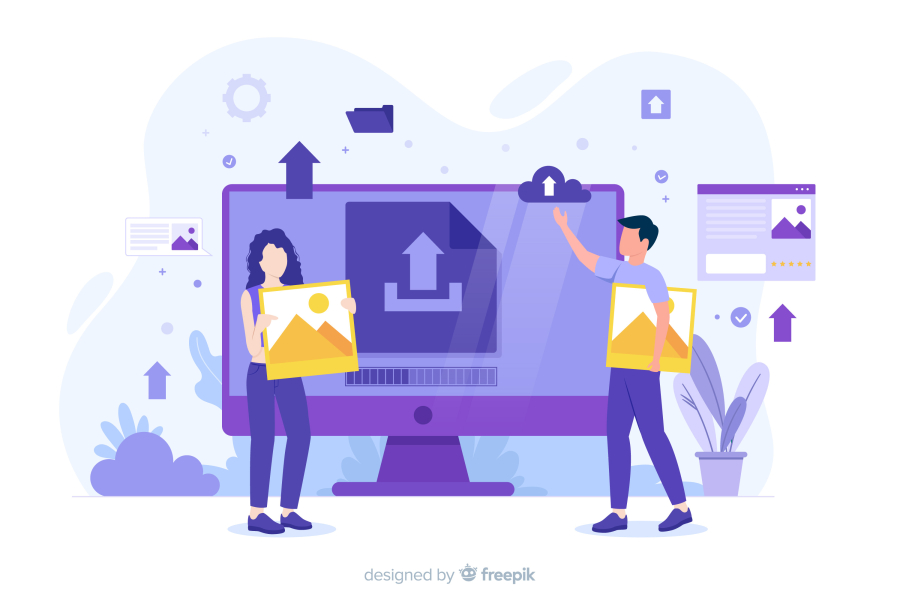Building an Online Portfolio for Interior Design
In today’s highly visual, competitive market, a well-crafted online portfolio is essential for any freelance interior designer. It serves as your digital storefront, showcasing your design capabilities, creative thinking, and professional identity. Whether you're pitching to residential clients or commercial businesses, your online portfolio plays a pivotal role in converting interest into contracts.
At freelancerbridge, we understand that a strong portfolio is more than just a gallery—it's a strategic tool that communicates your value and personality. This guide explains how to build an effective online portfolio that not only highlights your design work but also helps you attract, engage, and convert potential clients.
Long Description
Why an Online Portfolio Is a Must for Freelance Interior Designers
Your portfolio is often the first impression a client will have of your work. In 2025, with most discovery happening online, a portfolio must be:
Visually compelling
Mobile-friendly
Easy to navigate
Clear about your niche, style, and services
Optimized for search engines
Without a well-structured online presence, even the most talented interior designers can go unnoticed in the digital space.
Step-by-Step Guide to Building Your Online Interior Design Portfolio
1. Define Your Niche and Style
Before building the portfolio, define who your ideal clients are:
Residential homeowners
Hospitality and commercial clients
Retail and boutique owners
Real estate staging professionals
Also, define your style: minimal, eclectic, industrial, modern, or bohemian. This helps you curate the right kind of visuals and messaging.
SEO Tip: Use phrases like “modern interior designer for restaurants” or “minimalist home design specialist” on your About and Services pages.
2. Choose the Right Platform
Popular platforms for freelance portfolios include:
Wix – Easy drag-and-drop interface with interior design templates
Squarespace – Sleek, modern designs ideal for image-heavy portfolios
WordPress + Elementor – Flexible and scalable
Adobe Portfolio – Seamlessly integrates with Adobe Creative Suite
Behance – Good for gaining visibility among creative professionals
Ensure your chosen platform allows for:
Responsive design
Image optimization
Custom domains
SEO editing features (title tags, meta descriptions)
3. Create a Strong Homepage
Your homepage should instantly communicate:
Who you are
What you do
What problems you solve
A visual preview of your work
Clear navigation to other pages (Portfolio, About, Contact)
Include a brief value proposition, such as:
“I help clients transform living spaces into functional, stylish sanctuaries using natural textures and minimalist design.”
4. Curate and Present Your Projects Thoughtfully
Each project should include:
A high-resolution gallery (before/after if possible)
Project title and location
Project description: objectives, challenges, design approach
Your role and contributions
Client testimonial (if available)
Bonus: Break projects down into categories like kitchens, offices, cafes, or small apartments to help visitors browse based on interest.
5. Highlight Your Process
Clients love to know how you work. Create a page or section outlining:
Discovery and consultation
Mood boards and concept development
Space planning and 3D modeling (mention tools like SketchUp, AutoCAD)
Material and color selection
Execution and delivery
This builds trust and differentiates you from designers who only showcase visuals without explaining their methods.
6. Add a Compelling About Page
This page should:
Introduce you personally (your background and passion for design)
Highlight years of experience, certifications, or education
Reflect your tone and aesthetic
Include a professional photo
Also, link to any industry memberships, publications, or awards.
SEO Tip: Use keywords like “freelance interior designer in [city]” or “online interior design expert for small spaces.”
7. Include Client Testimonials and Social Proof
Testimonials provide credibility and make your portfolio feel authentic. Add:
Direct quotes from satisfied clients
Star ratings (if relevant)
Case study highlights
Social proof through embedded Instagram or Pinterest feeds showing real engagement
8. Integrate Contact and Booking Options
Make it easy for potential clients to reach out:
Add a clear Contact button in your menu
Include a simple contact form (name, email, project type, message)
Add phone number and location (especially important for local SEO)
Optional: Embed Calendly or another booking tool to let prospects schedule a consultation
9. Optimize for SEO and User Experience
Your portfolio won't attract leads unless people can find it. Optimize for:
Speed – Compress images
Mobile – Ensure full functionality on smartphones
Keywords – Use location- and service-based keywords
Internal linking – Link your About, Projects, and Services pages
Metadata – Write unique meta descriptions and title tags for every page
This ensures your portfolio ranks well in search engines and performs well for all users.
10. Promote Your Portfolio Across Channels
Once your site is live:
Share it on LinkedIn, Instagram, and Pinterest
Add the link to your Upwork, Fiverr, or Houzz profiles
Include it in your email signature
Write blog posts on your site discussing design challenges or trends to boost SEO
Run ads or campaigns targeting your niche audience (Google or social media)
Additional Portfolio Features That Impress Clients
Downloadable Lookbooks or Design Guides
Client Project Planner (PDF or Form)
Freebies like “Top 10 Tips for Small Apartment Interiors”
Newsletter Opt-in with regular updates and design advice
Interactive before/after sliders
These features provide additional value and help capture leads.
Common Mistakes to Avoid
Using low-quality or pixelated images
Overcrowding the homepage
Lack of mobile optimization
Not updating the site with recent work
Forgetting clear CTAs (Call to Actions)
Ignoring SEO basics like headers, alt text, and keywords
A clean, fast, and client-focused portfolio builds more trust than a flashy but cluttered one.
How Often Should You Update Your Portfolio?
After every major project completion
Quarterly reviews for content and SEO
Annually refresh the design to reflect current aesthetic trends
Rotate projects based on niche you want to target (e.g., more cafe projects if that’s your goal)
Final Thoughts
A well-designed, SEO-optimized online portfolio is one of the most powerful tools in a freelance interior designer’s business toolkit. It establishes credibility, showcases your talent, and acts as a round-the-clock salesperson for your services.
At freelancerbridge, we help freelancers like you create compelling online assets that support long-term success. By applying the principles in this guide, you can build a portfolio that not only looks good—but works hard to grow your interior design business.


 by Emily
by Emily




